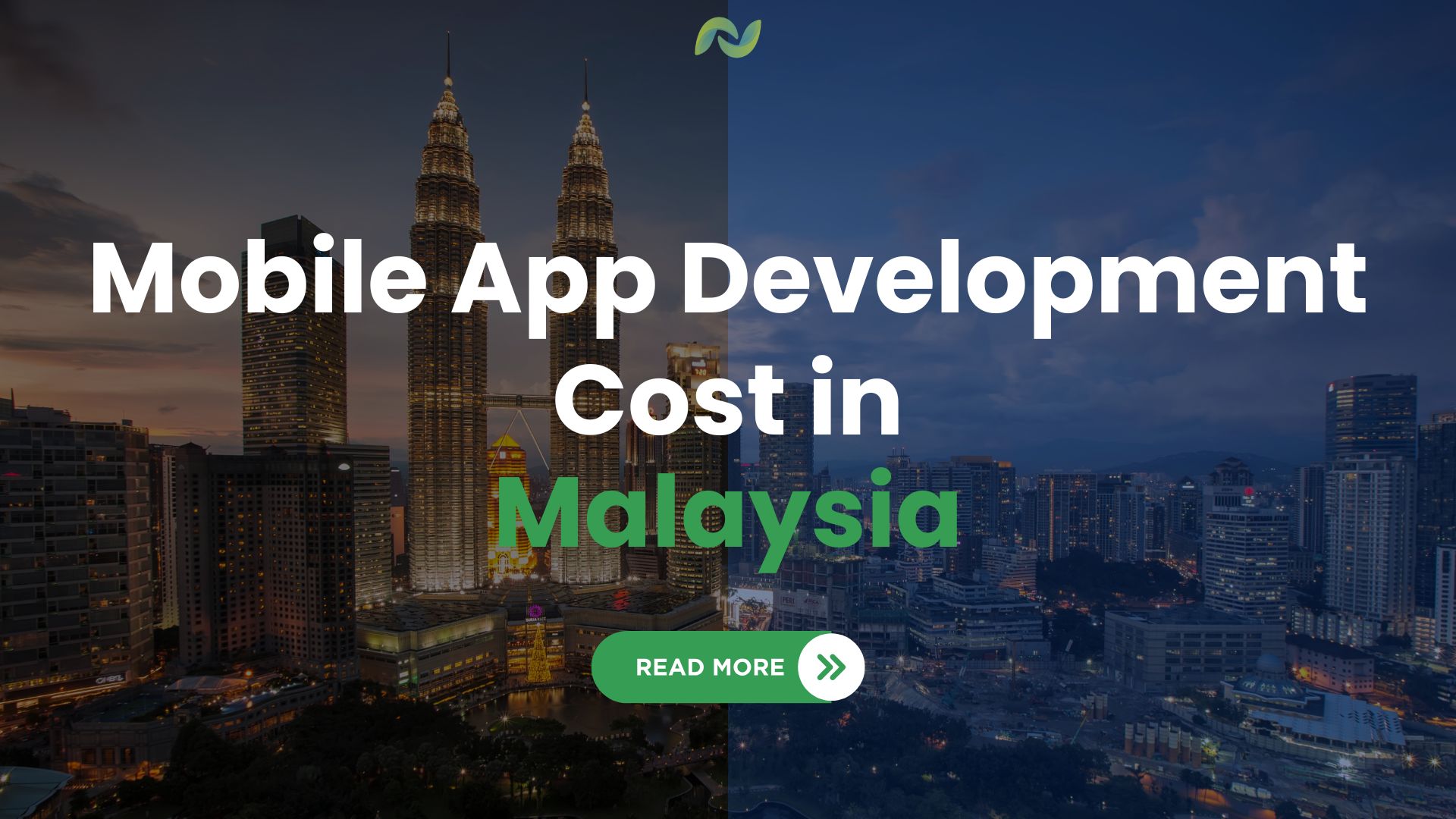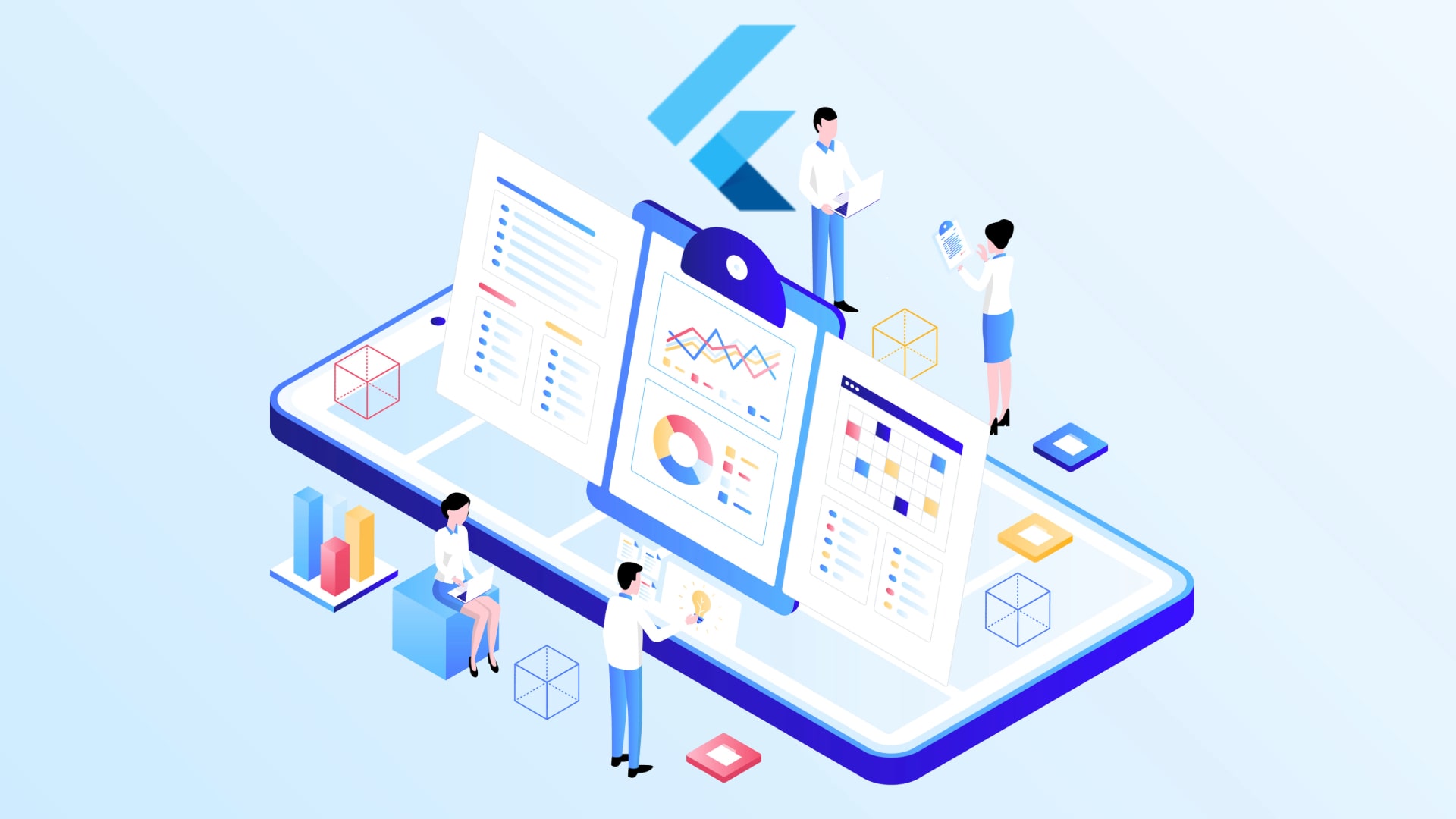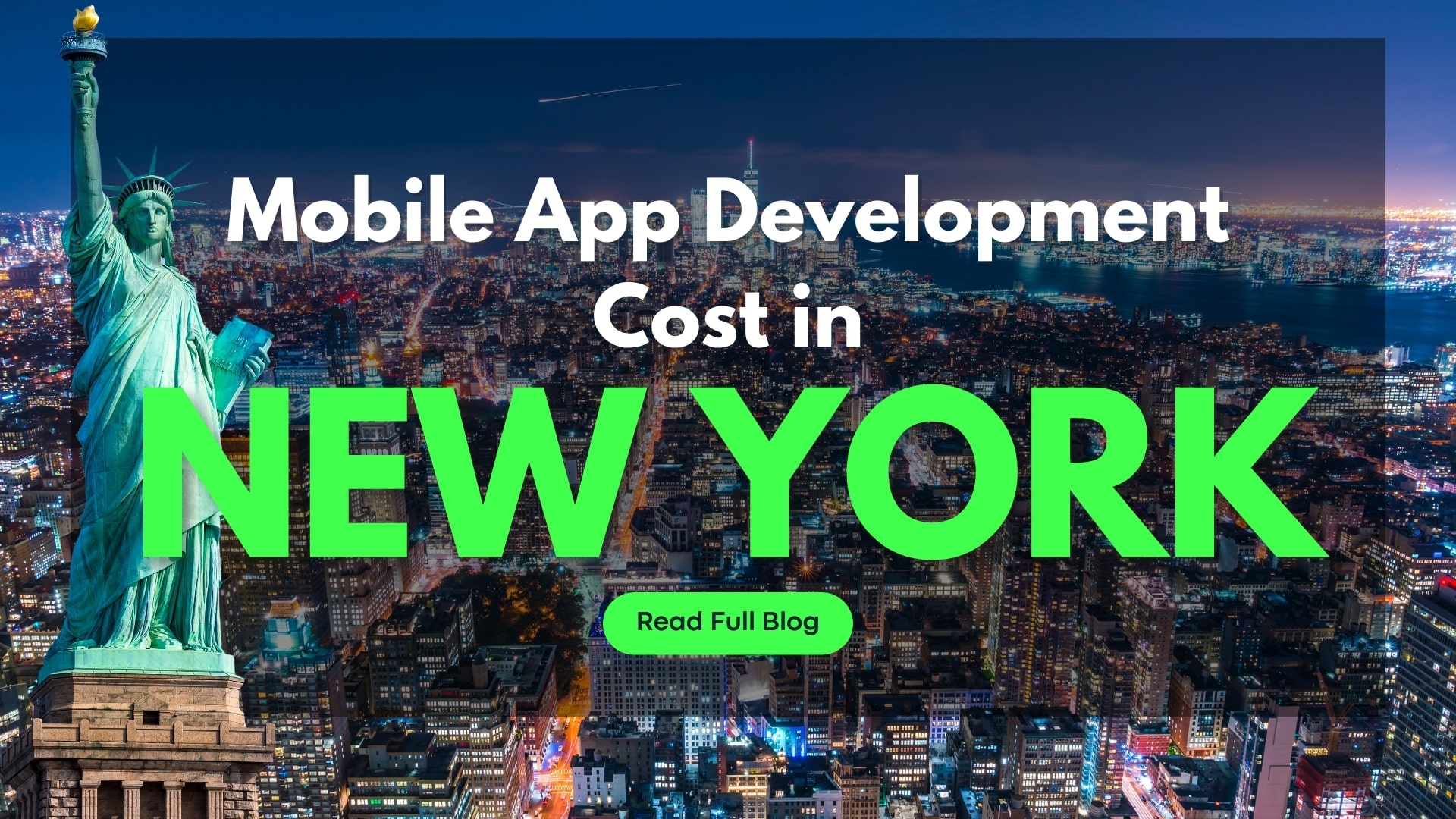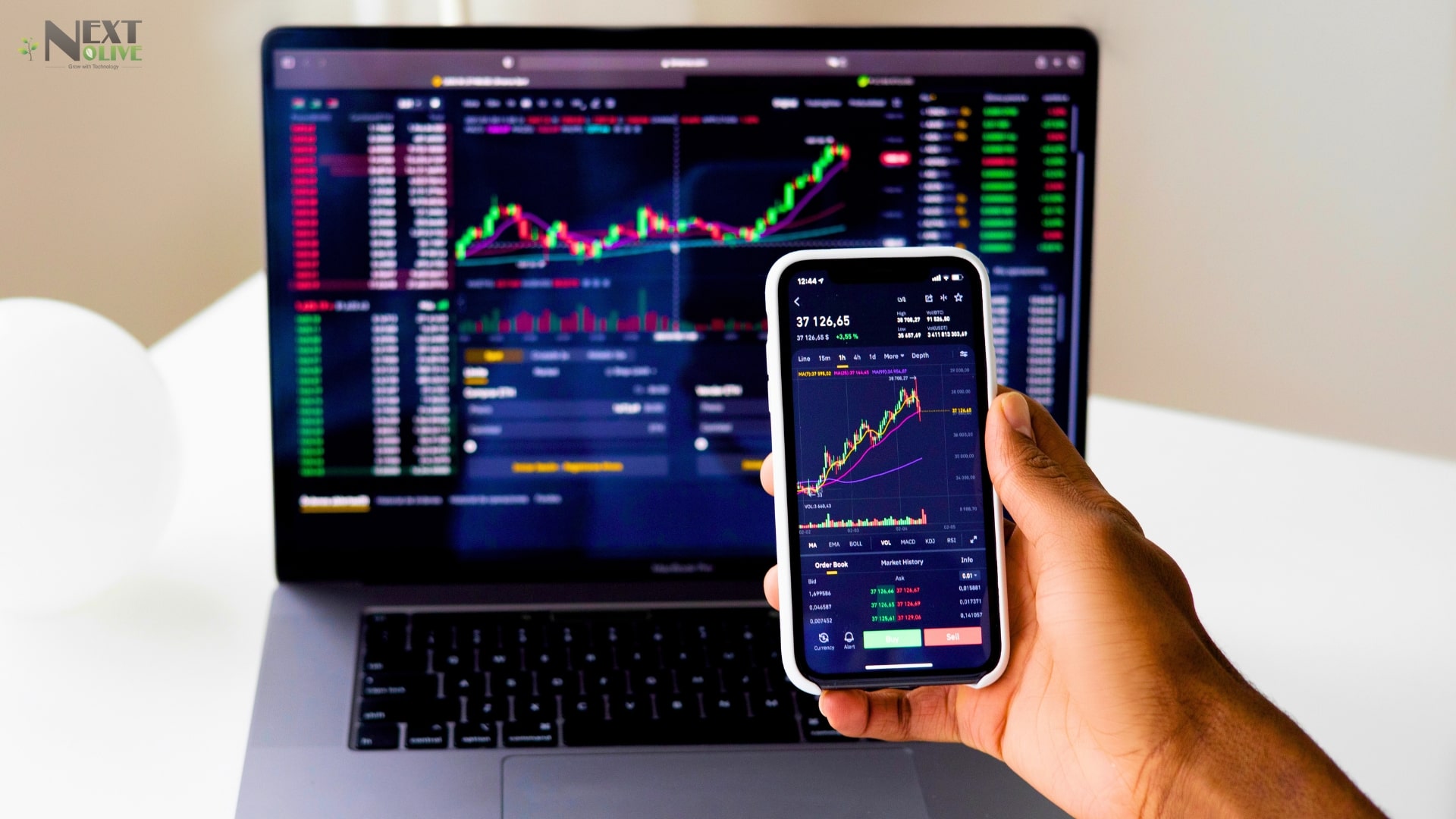How Much Does It Cost to Develop a Mobile App in Malaysia?
In 2025, many businesses are shifting towards Southeast Asian markets to establish themselves. One such country is Malaysia, a growing financial hub in Southeast Asia. Companies are racing to dominate the digital landscape and provide cutting-edge solutions to their clients. One question ponders: What is the mobile app development cost in Malaysia? Well, in this comprehensive guide, let us find out by analyzing the key factors influencing the application development cost.
Table of Contents
ToggleMarket Statistics of Mobile App Development in Malaysia in 2025

As per Statista, the mobile app development market cap has reached MYR 738.25 million in 2025, and with a CAGR of 7.79%, it is expected to reach MYR 996.49 million in 2029.
Mobile Application Development Cost Based on Type of Apps
[1] Native Application
Native apps are designed and developed to work on a single platform, such as Android or iOS. These apps fully utilize the hardware and platform resources and provide a seamless user experience and better performance due to optimization.
Cost to Develop: RM22,455 to RM269,459 ($5,000 to $60,000) or more.
[2] Cross-Platform Apps
Cross-platform apps are designed and developed to work on any platform, regardless of the device. These mobile applications are developed using cross-platform technologies such as Flutter and Ionic and utilize a single codebase in a single app for multiple platforms.
Cost: RM17,964 to RM224,549 ($4,000 to $50,000) or more.
[3] Web Apps
Web apps are responsive websites that offer major features and functionalities of a mobile app. A web app is hosted on a website and is accessed using a web browser. One of the major advantages of a web app is that it can be accessed on any device having a web browser.
Cost: RM22,455 to RM179,639 ($5,000 to $40,000) or more.
[4] Progressive Web Applications
PWAs are one of the newest technologies. A PWA is a type of app that can be accessed on any device using a web browser using the internet, but offers native-like performance and speed. PWAs also offer offline functionality and an engaging user interface on any device or platform.
Cost: RM31,436 to RM247,004 ($7,000 to $55,000) or more.
[5] Gaming Applications
Gaming apps come in either 2D or 3D. 2D games such as Tic Tac Toe require fewer resources and time to build, but 3D games with VR integration, 3D graphics, high-end animations, and VFX require a large team and plenty of time and resources to develop.
Cost: RM179,639 to RM17,96,399 ($40,000 to $400,000) or more.
Factors That Influence Mobile App Development Cost in Malaysia
[1] App Complexity and Features
Nowadays, mobile apps are becoming feature-rich and highly complex. The more the features, the more complex the app becomes, thus raising the overall mobile app development cost. Features such as AI/ML integration and chatbots add to the cost.
[2] Selection of the Platform
There are multiple platforms to choose from, such as Android, iOS, and Windows. You can select either native app development for developing an app for a single platform only or a cross-platform app to work on multiple platforms. Native apps are generally costly to develop and maintain, while cross-platform apps are cost-effective but might have performance issues.
[3] UI/UX Complexity
An intuitive and engaging user interface and user experience are important aspects of a mobile application. A simple UI with simple animations and transitions would cost less compared to a UI with complex and custom animations and buttons, as well as functionalities.
[4] Development Team
The development team also comes with certain factors that need to be addressed. A small-sized team will charge less for a basic or medium-sized app, but the development and delivery time will be longer. A larger team would charge more, but the development time would be reduced depending on the size of the project. A team situated in the USA would charge more than a locally available team.
[5] Third-Party Integrations
Third-party integrations increase the features and functionalities of the mobile app. Developing a custom API would cost more time and resources and increase the overall costs. Licensing a third-party API would generally cost much less, and integrating it with the app would take less time.
[6] Maintenance and Updates
Post-deployment maintenance ensures the app works fine without any bugs and errors, and regular updates upgrade the app with the latest features and functionalities to keep up with the market trends and increase the user base of the app.
[7] Security Features
A well-secured app builds trust among the users. Nowadays, data privacy is regarded highly important aspect of mobile apps. Security features such as end-to-end data encryption, 2-factor authentication, and biometric lock require additional costs to implement into the app.
[8] Marketing and Promotion
Marketing and promotion of the app through social media and paid advertisement campaigns require additional costs after the development. Without marketing, the app would be unnoticeable to the target audience.
Integration of Popular Features and Their Costs in Mobile Apps
[1] Basic Features
{1} User Profile Creation
- Description: Create or update the user profile and personalize it as well.
- Cost: RM1,796 to RM4,491 ($400 to $1,000).
{2} Basic Reporting and Analytics
- Description: Generate reports related to users, app usage, and more.
- Cost: RM3,143 to RM5,838 ($700 to $1,300).
{3} Push Notifications
- Description: Never miss any new update related to any information.
- Cost: RM2,245 to RM5,838 ($500 to $1,100).
{4} Offline Functionality
- Description: Use the mobile app’s features even without the internet.
- Cost: RM4,940 to RM8,083 ($1,100 to $1,800).
{5} Search Option
- Description: Search for anything within the app, such as any setting or feature etc.
- Cost: RM1,796 to RM5,838 ($400 to $1,300).
[2] Popular Features
{1} Payment Gateway
- Description: Pay money securely within or through the app.
- Cost: RM5,389 to RM13,473 ($1,200 to $3,000).
{2} In-App Messaging
- Description: Chat using the built-in messaging feature.
- Cost: RM6,287 to RM11,676 ($1,400 to $2,600).
{3} Social Media Sharing
- Description: Share anything on social media through the app.
- Cost: RM2,245 to RM6,736 ($500 to $1,500).
{4} Map and Navigation
- Description: Get access to the map and navigation features.
- Cost: RM6,287 to RM15,718 ($1,400 to $3,500).
{5} AR/VR Integration
- Description: Use Augmented Reality and Virtual Reality for virtual experience in learning and gaming.
- Cost: RM11,227 to RM33,682 ($2,500 to $7,500).
[3] Advanced and Complex Features
{1} AI/ML Integration
- Description: AI/ML is used to automate tasks and solve complex problems.
- Cost: RM11,227 to RM42,664 ($2,500 to $9,500).
{2} Voice Commands
- Description: Use voice commands to control the app.
- Cost: RM8,982 to RM24,700 ($2,000 to $5,500).
{3} Video Streaming
- Description: Livestream your favourite content within the app.
- Cost: RM15,718 to RM26,945 ($3,500 to $6,000).
{4} Multi-Language Support
- Description: Select the preferred language for using the app.
- Cost: RM8,982 to RM17,964 ($2,000 to $4,000).
{5} Security Features
- Description: Robust security features, such as 2-factor authentication and biometric login, ensure data protection.
- Cost: RM15,718 to RM42,664 ($3,500 to $9,500).
Latest Technologies Affecting the Mobile App Development Cost in Malaysia
[1] Artificial Intelligence and Machine Learning
- Description: AI and ML enable automation, better user experience, enhanced decision making, etc.
- Cost: RM26,945 to RM157,184 ($6,000 to $35,000).
[2] Internet of Things
- Description: IoT is used to connect smart devices with smartphones and control them using mobile apps.
- Cost: RM35,927 to RM134,729 ($8,000 to $30,000).
[3] Blockchain
- Description: Blockchain is used to ensure secure transactions and transparency.
- Cost: RM53,891 to RM179,639 ($12,000 to $40,000).
[4] Virtual Reality
- Description: Mobile users can explore the virtual world using their mobile devices and VR headsets.
- Cost: RM41,298 to RM291,914 ($25,000 to $65,000).
[5] Augmented Reality
- Description: AR overlays digital objects onto the real-world environment, and users can view the object using their mobile camera app.
- Cost: RM44,909 to RM247,004 ($10,000 to $55,000).
[6] Quantum Security
- Description: Create cryptographic techniques to block attacks from quantum computers.
- Cost: RM41,298 to RM291,914 ($20,000 to $65,000).
Frameworks
[1] React Native
- Description: Create cross-platform mobile applications with a single codebase.
- Cost: RM22,455 to RM112,274 ($5,000 to $25,000).
[2] Flutter
- Description: Develop cross-platform applications with reusable code for mobile and web.
- Cost: RM31,436 to RM89,819 ($7,000 to $20,000).
[3] Xamarin
- Description: Develop cross-platform applications with near-native performance.
- Cost: RM22,455 to RM112,274 ($5,000 to $25,000).
[4] Ionic
- Description: Used to create a cross-platform app with web features.
- Cost: RM35,927 to RM134,729 ($8,000 to $30,000).
[5] Progressive Web Apps
- Description: PWAs offer web application development with near-native performance.
- Cost: RM44,909 to RM202,094 ($10,000 to $45,000).
[6] Low-Code Platforms
- Description: Create mobile and web applications using pre-built modules with minimal coding.
- Cost: RM31,436 to RM157,184 ($7,000 to $35,000).
Follow a Step-by-Step Mobile App Development Process

[1] Requirement Gathering and Feasibility Analysis
Every successful project starts with an idea. The client contacts a mobile app development company in Malaysia, and the team of analysts conducts a meeting to learn more about the project idea and conduct a feasibility analysis to check whether the project idea is practical or not in terms of budget, expected timeline, legal compliance, etc. Once the feasibility is checked, project requirements are gathered, and an SRS (Software Requirement Specification) document is prepared and signed by the client.
Cost Estimate: RM13,491 to RM44,970 ($3,000 to $10,000) or more, depending on the project.
[2] Creating a Project Plan
After the SRS is made, a comprehensive project plan is prepared that includes analyzing the SRS, selecting the development methodology such a Waterfall or Agile, deciding frontend and backend modules, selecting the right technology stack, creating project milestones, etc.
Cost Estimate: RM8,994 to RM53,964 ($2,000 to $12,000) or more, depending on the project.
[3] Developing Wireframes and Prototypes
After the project plan is created, the designing and development teams create wireframes of the project to visualize the layout, data flow, and functionalities in a 2-dimensional view. Then, a prototype of the app is created to simulate the working of the app and get an idea of what the app would look like after development.
Cost Estimate: RM31,479 RM89,940 ($7,000 to $20,000) or more, depending on the project.
[4] Creating Frontend
The frontend is the part that is visible to the app users. It should be intuitive, user-friendly, fast, and highly responsive. The frontend is developed by keeping the users at its center of focus.
Cost Estimate: RM44,970 to RM179,880 ($10,000 to $40,000) or more, depending on the project.
[5] Backend Development
The backend is the main support of the overall mobile application. The backend includes the overall functionalities and data flow control system, as well as a robust security system to protect from various cyber attacks and data breaches. API integration is also important to provide additional features and functionalities to the mobile app.
Cost Estimate: RM89940 to RM359,760 ($20,000 to $80,000) or more, depending on the project.
[6] Testing and Quality Assurance
Now, after the mobile app development is completed, it is time to test the app. Testing the app is done to ensure the app is free from any bugs and errors, meets the client’s expectations, and ensures the overall quality of the app. Various tests are performed, such as unit, integration, functional, non-functional, security, user acceptance, etc.
Cost Estimate: RM22,485 to RM134,910 ($5,000 to $30,000) or more, depending on the project.
[7] Deployment and Launching of the App
The app is deployed to the app store of the respective platform it is developed for Marketing campaigns on social media and search engines are done to promote the app and ensure the app reaches a wider audience.
Cost Estimate: RM6,745 to RM44,970 ($1,500 to $10,000).
[8] Post-Deployment Maintenance and Updates
Post-deployment maintenance is necessary to ensure the app works without any bugs and errors and works for a long time. Also, regular updates are provided to upgrade the app with new features and functionalities to keep up with the market competition.
Cost Estimate: RM4,497 to RM44,970 ($1,000 to $10,000) per Month.
Use the Best and Latest Tech Stack in Mobile App Development
[1] MEAN Stack: MongoDB, Express.js, Angular.js, Node.js.
[2] LAMP Stack: Linux (OS), Apache, MySQL, PHP.
[3] MERN Stack: MongoDB, Express.js, React.js, Node.js.
[3] Native Development: Java, Kotlin.
[4] Cross-Platform Development: Flutter, Xamarin, Ionic, Dart (Programming Language).
[5] Cloud: AWS, GCP, Azure.
[6] Serverless Architecture: AWS Lambda, Google Cloud Functions, Azure Functions.
[7] Testing Tools: Appium, Espresso, TestFlight
[8] APIs: REST, SOAP, GraphQL.
[9] Project Management Tools: Jira, MS Project, Trello.
[10] CI/CD Tools: Jenkins, GitLab.
[11] Version Control: Git, BitBucket, AWS CodeCommit.
How to Monetize Your Mobile Apps?
[1] Freemium Model
In this model, the users can use the app free of cost and use the basic features fully. But in order to use more features and functionalities, they need to buy the full version of the app.
[2] In-App Purchases
Users can purchase premium items such as gift cards, discount coupons, or packages related to virtual items, ad-free experience, etc.
[3] In-App Advertisement
You can offer brands and companies to promote their products and services related to the niche of the app on the ad slot on your app. You charge money for ad services on your app.
[4] Subscription Plans
You can provide a set of features and functionalities in several tier plans. Each higher tier would include the basic and advanced features and functionalities of the lower tier package. You can charge users on a monthly or yearly basis.
How to Reduce the Mobile App Development Cost in Malaysia?
[1] Provide Clear Goals and Requirements
Prioritize essential features and functionalities, and define clear requirements to avoid confusion and eliminate the possibility of spending time and resources on unnecessary features in the app.
[2] Select the Right Development Team
A small team is perfect for small and medium-sized projects, whereas a large team is best for large projects. The hiring price of both team sizes is different and varies by several factors such as location and expertise. You can hire a mobile app development company in Malaysia to optimize the costs.
[3] Prioritize Cross-Platform Development
Cross-platform development leverages a single codebase for developing a single app for multiple platforms, hence saving a lot of resources and time and overall development costs.
[4] Utilize Third-Party Tools and APIs
Use third-party APIs such as the maps API, payment gateway API, etc, because these APIs require licensing fees, which are generally less than designing and developing custom APIs from scratch.
[5] Select Cloud Platforms For Scalable Infrastructure
Just like third-party tools and APIs, cloud platforms such as AWS and GCP come with subscription fees that are beneficial for scaling the app in the future, as they eliminate the need to develop costly hardware infrastructure for the app.
How to Choose A Mobile App Development Company in Malaysia?
In 2025, choosing the right mobile application development firm is an important decision. To select a reliable firm, you need to verify that the company possesses some essential qualities, such as on-time delivery of the project, end-to-end and transparent communication with the client, and cost-effective solutions. Next Olive is one such company that offers its mobile app development services in Kuala Lumpur, George Town, Kota Kinabalu, and other parts of Malaysia. The company has over 13 years of experience and more than 200 mobile app developers. You can hire them for exceptional quality and cost-effective solutions.
Conclusion
In conclusion, the cost of mobile application development in Malaysia depends upon several key factors such as size, type, platform selection, and more. We also discovered the key factors that affect the app development cost, such as complexity, UI/UX, etc, and various monetization strategies that you can opt. Optimizing the overall cost also depends on several factors such as the development team, tech stack used, etc. Overall, the cost of the mobile app that you need for your business requirements depends on the above factors.
Frequently Asked Questions
What is the time to develop a mobile app in Malaysia?
The time required for mobile app development depends upon several factors such as type, size, and overall complexity of the app:
• Basic Mobile App: 2 to 4 Months.
• Medium-Complexity Mobile App: 4 to 7 Months.
• Highly Complex Application: 7 to over 10 Months.
What are the average Android app development cost, iOS app development cost, Flutter app development cost, and e-commerce app development cost?
The average cost of these apps depends on various factors such as size, complexity, features, functionalities, and the size of the mobile application.
• Basic App: RM13,488 to RM89,919 ($3,000 to $20,000).
• Medium-Sized App: RM89,919 to RM359,679 ($20,000 to $80,000).
• High Complexity App: RM359,679 to over RM4,49,599 ($80,000 to over $100,000).








